Answered step by step
Verified Expert Solution
Question
1 Approved Answer
QUESTION What is the risk or benefit and impact on Westwood if nothing is done and the exchange rate changes from budget to C$ 1.3000
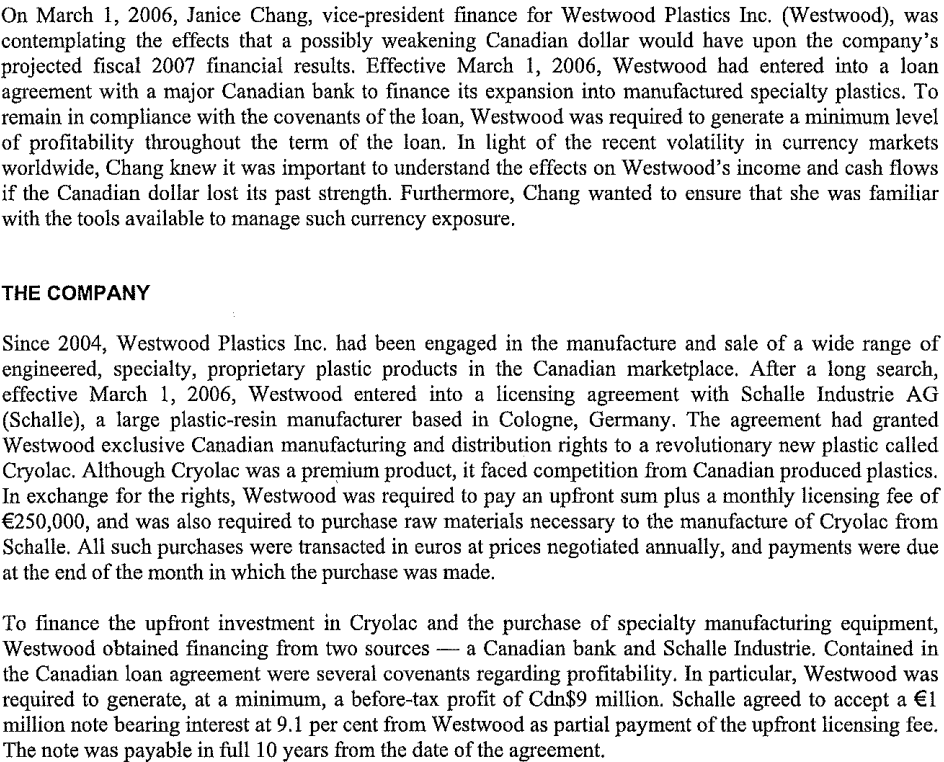
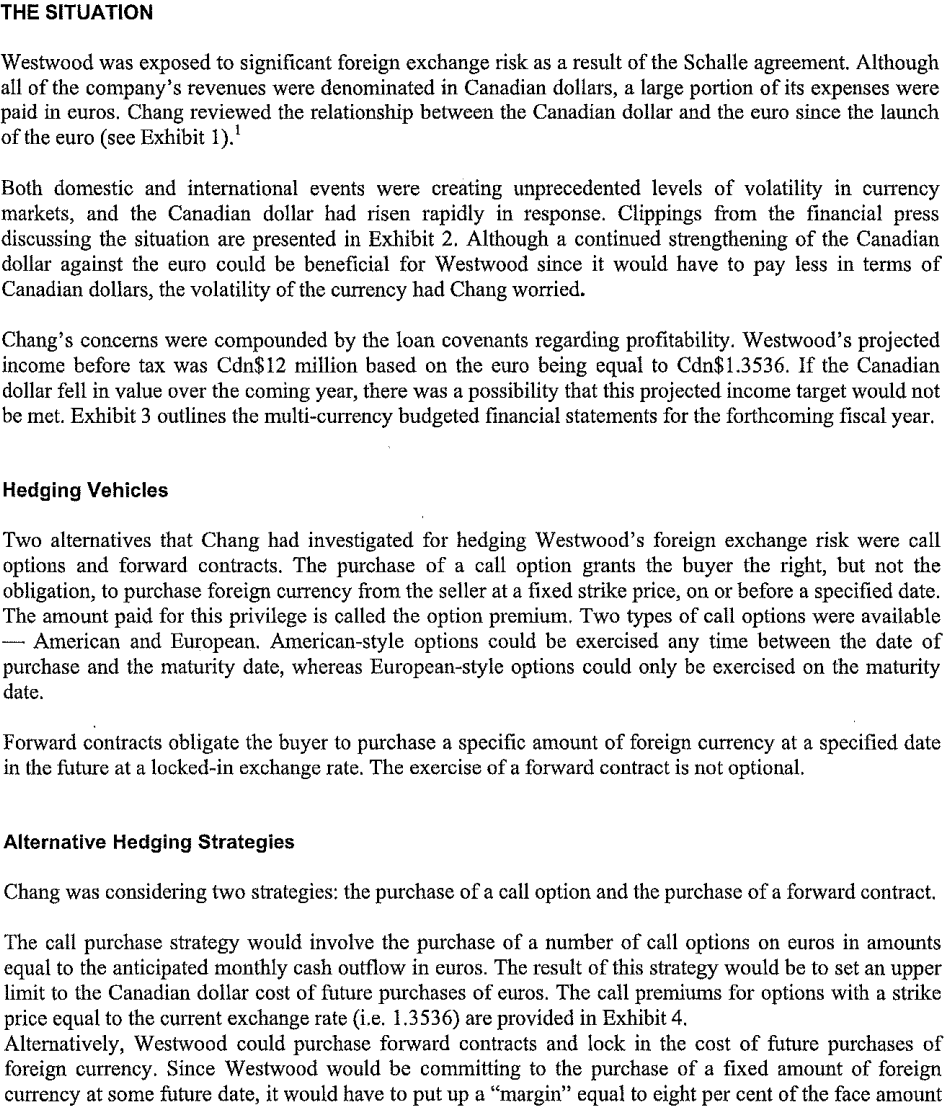
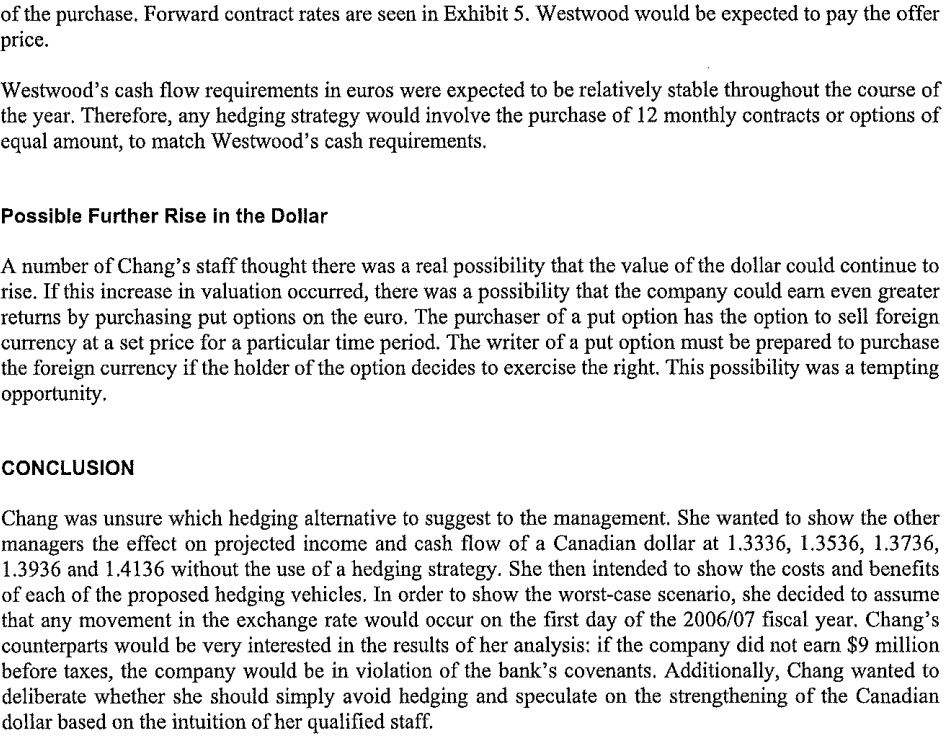

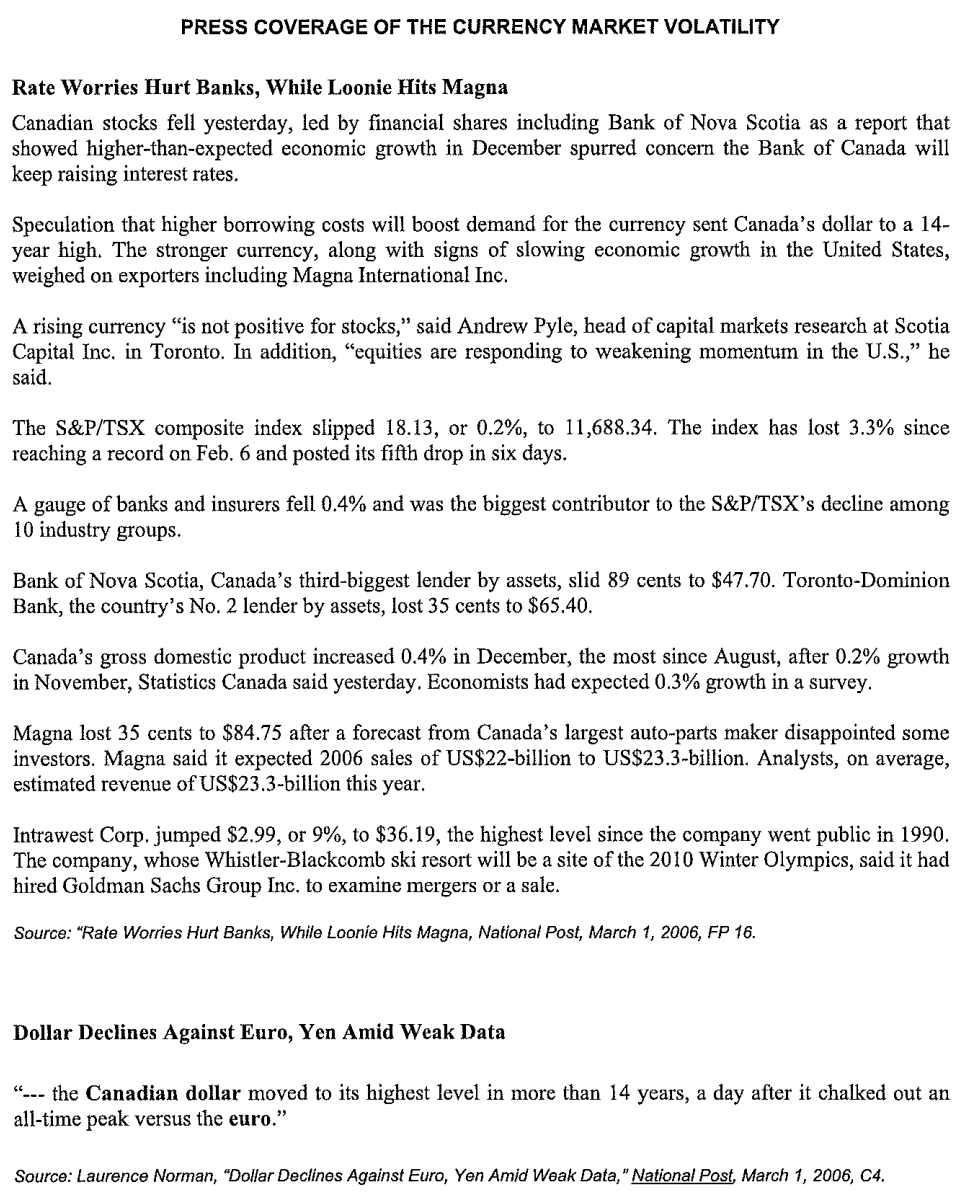
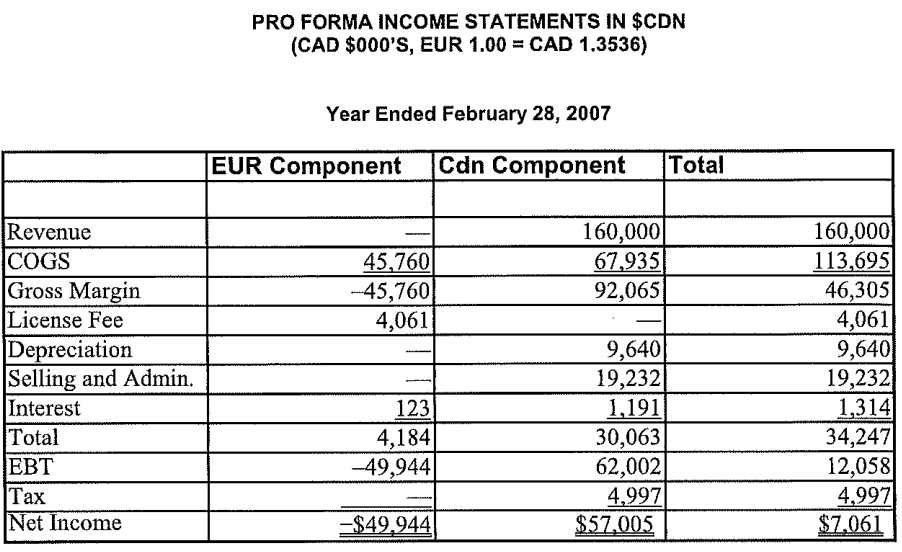
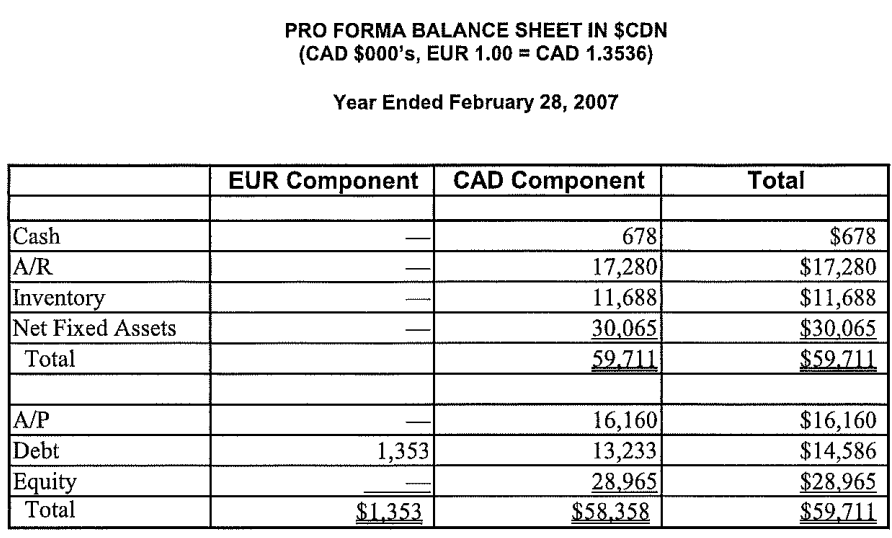
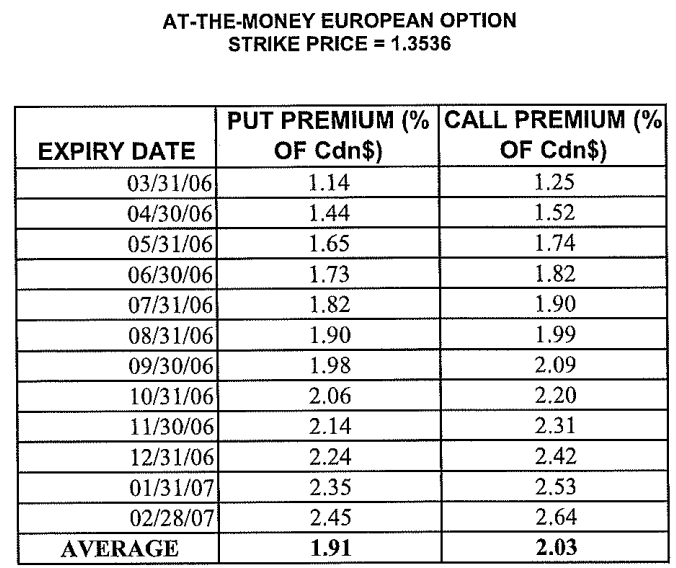
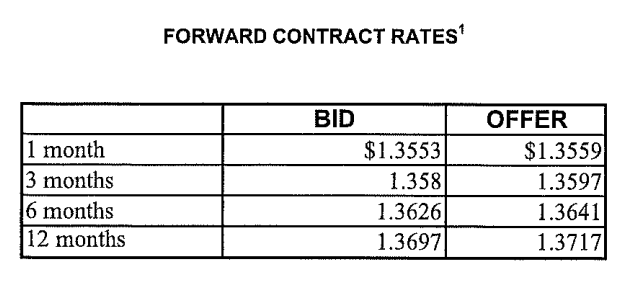
QUESTION
What is the risk or benefit and impact on Westwood if nothing is done and the exchange rate changes from budget to C$ 1.3000 = Euro 1. Show your analysis.?
On March 1, 2006, Janice Chang, vice-president finance for Westwood Plastics Inc. (Westwood), was contemplating the effects that a possibly weakening Canadian dollar would have upon the company's projected fiscal 2007 financial results. Effective March 1, 2006, Westwood had entered into a loan agreement with a major Canadian bank to finance its expansion into manufactured specialty plastics. To remain in compliance with the covenants of the loan, Westwood was required to generate a minimum level of profitability throughout the term of the loan. In light of the recent volatility in currency markets worldwide, Chang knew it was important to understand the effects on Westwood's income and cash flows if the Canadian dollar lost its past strength. Furthermore, Chang wanted to ensure that she was familiar with the tools available to manage such currency exposure. THE COMPANY Since 2004, Westwood Plastics Inc. had been engaged in the manufacture and sale of a wide range of engineered, specialty, proprietary plastic products in the Canadian marketplace. After a long search, effective March 1, 2006, Westwood entered into a licensing agreement with Schalle Industrie AG (Schalle), a large plastic-resin manufacturer based in Cologne, Germany. The agreement had granted Westwood exclusive Canadian manufacturing and distribution rights to a revolutionary new plastic called Cryolac. Although Cryolac was a premium product, it faced competition from Canadian produced plastics. In exchange for the rights, Westwood was required to pay an upfront sum plus a monthly licensing fee of 250,000, and was also required to purchase raw materials necessary to the manufacture of Cryolac from Schalle. All such purchases were transacted in euros at prices negotiated annually, and payments were due at the end of the month in which the purchase was made. To finance the upfront investment in Cryolac and the purchase of specialty manufacturing equipment, Westwood obtained financing from two sources - a Canadian bank and Schalle Industrie. Contained in the Canadian loan agreement were several covenants regarding profitability. In particular, Westwood was required to generate, at a minimum, a before-tax profit of Cdn$9 million. Schalle agreed to accept a 1 million note bearing interest at 9.1 per cent from Westwood as partial payment of the upfront licensing fee. The note was payable in full 10 years from the date of the agreement. Westwood was exposed to significant foreign exchange risk as a result of the Schalle agreement. Although all of the company's revenues were denominated in Canadian dollars, a large portion of its expenses were paid in euros. Chang reviewed the relationship between the Canadian dollar and the euro since the launch of the euro (see Exhibit 1). 1 Both domestic and international events were creating unprecedented levels of volatility in currency markets, and the Canadian dollar had risen rapidly in response. Clippings from the financial press discussing the situation are presented in Exhibit 2. Although a continued strengthening of the Canadian dollar against the euro could be beneficial for Westwood since it would have to pay less in terms of Canadian dollars, the volatility of the currency had Chang worried. Chang's concerns were compounded by the loan covenants regarding profitability. Westwood's projected income before tax was Cdn $12 million based on the euro being equal to Cdn$1.3536. If the Canadian dollar fell in value over the coming year, there was a possibility that this projected income target would not be met. Exhibit 3 outlines the multi-currency budgeted financial statements for the forthcoming fiscal year. Hedging Vehicles Two alternatives that Chang had investigated for hedging Westwood's foreign exchange risk were call options and forward contracts. The purchase of a call option grants the buyer the right, but not the obligation, to purchase foreign currency from the seller at a fixed strike price, on or before a specified date. The amount paid for this privilege is called the option premium. Two types of call options were available - American and European. American-style options could be exercised any time between the date of purchase and the maturity date, whereas European-style options could only be exercised on the maturity date. Forward contracts obligate the buyer to purchase a specific amount of foreign currency at a specified date in the future at a locked-in exchange rate. The exercise of a forward contract is not optional. Alternative Hedging Strategies Chang was considering two strategies: the purchase of a call option and the purchase of a forward contract. The call purchase strategy would involve the purchase of a number of call options on euros in amounts equal to the anticipated monthly cash outflow in euros. The result of this strategy would be to set an upper limit to the Canadian dollar cost of future purchases of euros. The call premiums for options with a strike price equal to the current exchange rate (i.e. 1.3536) are provided in Exhibit 4. Alternatively, Westwood could purchase forward contracts and lock in the cost of future purchases of foreign currency. Since Westwood would be committing to the purchase of a fixed amount of foreign currency at some future date, it would have to put up a "margin" equal to eight per cent of the face amount of the purchase. Forward contract rates are seen in Exhibit 5. Westwood would be expected to pay the offer price. Westwood's cash flow requirements in euros were expected to be relatively stable throughout the course of the year. Therefore, any hedging strategy would involve the purchase of 12 monthly contracts or options of equal amount, to match Westwood's cash requirements. Possible Further Rise in the Dollar A number of Chang's staff thought there was a real possibility that the value of the dollar could continue to rise. If this increase in valuation occurred, there was a possibility that the company could earn even greater returns by purchasing put options on the euro. The purchaser of a put option has the option to sell foreign currency at a set price for a particular time period. The writer of a put option must be prepared to purchase the foreign currency if the holder of the option decides to exercise the right. This possibility was a tempting opportunity. CONCLUSION Chang was unsure which hedging alternative to suggest to the management. She wanted to show the other managers the effect on projected income and cash flow of a Canadian dollar at 1.3336, 1.3536, 1.3736, 1.3936 and 1.4136 without the use of a hedging strategy. She then intended to show the costs and benefits of each of the proposed hedging vehicles. In order to show the worst-case scenario, she decided to assume that any movement in the exchange rate would occur on the first day of the 2006/07 fiscal year. Chang's counterparts would be very interested in the results of her analysis: if the company did not earn $9 million before taxes, the company would be in violation of the bank's covenants. Additionally, Chang wanted to deliberate whether she should simply avoid hedging and speculate on the strengthening of the Canadian dollar based on the intuition of her qualified staff. COST OF 1.00 IN CANADIAN DOLLARS CAD per 1 EUR Date Rate Worries Hurt Banks, While Loonie Hits Magna Canadian stocks fell yesterday, led by financial shares including Bank of Nova Scotia as a report that showed higher-than-expected economic growth in December spurred concern the Bank of Canada will keep raising interest rates. Speculation that higher borrowing costs will boost demand for the currency sent Canada's dollar to a 14year high. The stronger currency, along with signs of slowing economic growth in the United States, weighed on exporters including Magna International Inc. A rising currency "is not positive for stocks," said Andrew Pyle, head of capital markets research at Scotia Capital Inc. in Toronto. In addition, "equities are responding to weakening momentum in the U.S.," he said. The S\&P/TSX composite index slipped 18.13, or 0.2%, to 11,688.34. The index has lost 3.3% since reaching a record on Feb. 6 and posted its fifth drop in six days. A gauge of banks and insurers fell 0.4% and was the biggest contributor to the S\&P/TSX's decline among 10 industry groups. Bank of Nova Scotia, Canada's third-biggest lender by assets, slid 89 cents to $47.70. Toronto-Dominion Bank, the country's No. 2 lender by assets, lost 35 cents to $65.40. Canada's gross domestic product increased 0.4% in December, the most since August, after 0.2% growth in November, Statistics Canada said yesterday. Economists had expected 0.3% growth in a survey. Magna lost 35 cents to $84.75 after a forecast from Canada's largest auto-parts maker disappointed some investors. Magna said it expected 2006 sales of US $22-billion to US $23.3-billion. Analysts, on average, estimated revenue of US $23.3-billion this year. Intrawest Corp. jumped $2.99, or 9%, to $36.19, the highest level since the company went public in 1990 . The company, whose Whistler-Blackcomb ski resort will be a site of the 2010 Winter Olympics, said it had hired Goldman Sachs Group Inc. to examine mergers or a sale. Source: "Rate Worries Hurt Banks, While Loonie Hits Magna, National Post, March 1, 2006, FP 16. Dollar Declines Against Euro, Yen Amid Weak Data "-.- the Canadian dollar moved to its highest level in more than 14 years, a day after it chalked out an all-time peak versus the euro." Source: Laurence Norman, "Dollar Declines Against Euro, Yen Amid Weak Data," National Post, March 1, 2006, C4. PRO FORMA INCOME STATEMENTS IN \$CDN (CAD \$000'S, EUR 1.00= CAD 1.3536) Year Ended February 28, 2007 PRO FORMA BALANCE SHEET IN \$CDN (CAD \$000's, EUR 1.00= CAD 1.3536) Year Ended February 28, 2007 AT-THE-MONEY EUROPEAN OPTION STRIKE PRICE =1.3536 FORWARD CONTRACT RATES 1 On March 1, 2006, Janice Chang, vice-president finance for Westwood Plastics Inc. (Westwood), was contemplating the effects that a possibly weakening Canadian dollar would have upon the company's projected fiscal 2007 financial results. Effective March 1, 2006, Westwood had entered into a loan agreement with a major Canadian bank to finance its expansion into manufactured specialty plastics. To remain in compliance with the covenants of the loan, Westwood was required to generate a minimum level of profitability throughout the term of the loan. In light of the recent volatility in currency markets worldwide, Chang knew it was important to understand the effects on Westwood's income and cash flows if the Canadian dollar lost its past strength. Furthermore, Chang wanted to ensure that she was familiar with the tools available to manage such currency exposure. THE COMPANY Since 2004, Westwood Plastics Inc. had been engaged in the manufacture and sale of a wide range of engineered, specialty, proprietary plastic products in the Canadian marketplace. After a long search, effective March 1, 2006, Westwood entered into a licensing agreement with Schalle Industrie AG (Schalle), a large plastic-resin manufacturer based in Cologne, Germany. The agreement had granted Westwood exclusive Canadian manufacturing and distribution rights to a revolutionary new plastic called Cryolac. Although Cryolac was a premium product, it faced competition from Canadian produced plastics. In exchange for the rights, Westwood was required to pay an upfront sum plus a monthly licensing fee of 250,000, and was also required to purchase raw materials necessary to the manufacture of Cryolac from Schalle. All such purchases were transacted in euros at prices negotiated annually, and payments were due at the end of the month in which the purchase was made. To finance the upfront investment in Cryolac and the purchase of specialty manufacturing equipment, Westwood obtained financing from two sources - a Canadian bank and Schalle Industrie. Contained in the Canadian loan agreement were several covenants regarding profitability. In particular, Westwood was required to generate, at a minimum, a before-tax profit of Cdn$9 million. Schalle agreed to accept a 1 million note bearing interest at 9.1 per cent from Westwood as partial payment of the upfront licensing fee. The note was payable in full 10 years from the date of the agreement. Westwood was exposed to significant foreign exchange risk as a result of the Schalle agreement. Although all of the company's revenues were denominated in Canadian dollars, a large portion of its expenses were paid in euros. Chang reviewed the relationship between the Canadian dollar and the euro since the launch of the euro (see Exhibit 1). 1 Both domestic and international events were creating unprecedented levels of volatility in currency markets, and the Canadian dollar had risen rapidly in response. Clippings from the financial press discussing the situation are presented in Exhibit 2. Although a continued strengthening of the Canadian dollar against the euro could be beneficial for Westwood since it would have to pay less in terms of Canadian dollars, the volatility of the currency had Chang worried. Chang's concerns were compounded by the loan covenants regarding profitability. Westwood's projected income before tax was Cdn $12 million based on the euro being equal to Cdn$1.3536. If the Canadian dollar fell in value over the coming year, there was a possibility that this projected income target would not be met. Exhibit 3 outlines the multi-currency budgeted financial statements for the forthcoming fiscal year. Hedging Vehicles Two alternatives that Chang had investigated for hedging Westwood's foreign exchange risk were call options and forward contracts. The purchase of a call option grants the buyer the right, but not the obligation, to purchase foreign currency from the seller at a fixed strike price, on or before a specified date. The amount paid for this privilege is called the option premium. Two types of call options were available - American and European. American-style options could be exercised any time between the date of purchase and the maturity date, whereas European-style options could only be exercised on the maturity date. Forward contracts obligate the buyer to purchase a specific amount of foreign currency at a specified date in the future at a locked-in exchange rate. The exercise of a forward contract is not optional. Alternative Hedging Strategies Chang was considering two strategies: the purchase of a call option and the purchase of a forward contract. The call purchase strategy would involve the purchase of a number of call options on euros in amounts equal to the anticipated monthly cash outflow in euros. The result of this strategy would be to set an upper limit to the Canadian dollar cost of future purchases of euros. The call premiums for options with a strike price equal to the current exchange rate (i.e. 1.3536) are provided in Exhibit 4. Alternatively, Westwood could purchase forward contracts and lock in the cost of future purchases of foreign currency. Since Westwood would be committing to the purchase of a fixed amount of foreign currency at some future date, it would have to put up a "margin" equal to eight per cent of the face amount of the purchase. Forward contract rates are seen in Exhibit 5. Westwood would be expected to pay the offer price. Westwood's cash flow requirements in euros were expected to be relatively stable throughout the course of the year. Therefore, any hedging strategy would involve the purchase of 12 monthly contracts or options of equal amount, to match Westwood's cash requirements. Possible Further Rise in the Dollar A number of Chang's staff thought there was a real possibility that the value of the dollar could continue to rise. If this increase in valuation occurred, there was a possibility that the company could earn even greater returns by purchasing put options on the euro. The purchaser of a put option has the option to sell foreign currency at a set price for a particular time period. The writer of a put option must be prepared to purchase the foreign currency if the holder of the option decides to exercise the right. This possibility was a tempting opportunity. CONCLUSION Chang was unsure which hedging alternative to suggest to the management. She wanted to show the other managers the effect on projected income and cash flow of a Canadian dollar at 1.3336, 1.3536, 1.3736, 1.3936 and 1.4136 without the use of a hedging strategy. She then intended to show the costs and benefits of each of the proposed hedging vehicles. In order to show the worst-case scenario, she decided to assume that any movement in the exchange rate would occur on the first day of the 2006/07 fiscal year. Chang's counterparts would be very interested in the results of her analysis: if the company did not earn $9 million before taxes, the company would be in violation of the bank's covenants. Additionally, Chang wanted to deliberate whether she should simply avoid hedging and speculate on the strengthening of the Canadian dollar based on the intuition of her qualified staff. COST OF 1.00 IN CANADIAN DOLLARS CAD per 1 EUR Date Rate Worries Hurt Banks, While Loonie Hits Magna Canadian stocks fell yesterday, led by financial shares including Bank of Nova Scotia as a report that showed higher-than-expected economic growth in December spurred concern the Bank of Canada will keep raising interest rates. Speculation that higher borrowing costs will boost demand for the currency sent Canada's dollar to a 14year high. The stronger currency, along with signs of slowing economic growth in the United States, weighed on exporters including Magna International Inc. A rising currency "is not positive for stocks," said Andrew Pyle, head of capital markets research at Scotia Capital Inc. in Toronto. In addition, "equities are responding to weakening momentum in the U.S.," he said. The S\&P/TSX composite index slipped 18.13, or 0.2%, to 11,688.34. The index has lost 3.3% since reaching a record on Feb. 6 and posted its fifth drop in six days. A gauge of banks and insurers fell 0.4% and was the biggest contributor to the S\&P/TSX's decline among 10 industry groups. Bank of Nova Scotia, Canada's third-biggest lender by assets, slid 89 cents to $47.70. Toronto-Dominion Bank, the country's No. 2 lender by assets, lost 35 cents to $65.40. Canada's gross domestic product increased 0.4% in December, the most since August, after 0.2% growth in November, Statistics Canada said yesterday. Economists had expected 0.3% growth in a survey. Magna lost 35 cents to $84.75 after a forecast from Canada's largest auto-parts maker disappointed some investors. Magna said it expected 2006 sales of US $22-billion to US $23.3-billion. Analysts, on average, estimated revenue of US $23.3-billion this year. Intrawest Corp. jumped $2.99, or 9%, to $36.19, the highest level since the company went public in 1990 . The company, whose Whistler-Blackcomb ski resort will be a site of the 2010 Winter Olympics, said it had hired Goldman Sachs Group Inc. to examine mergers or a sale. Source: "Rate Worries Hurt Banks, While Loonie Hits Magna, National Post, March 1, 2006, FP 16. Dollar Declines Against Euro, Yen Amid Weak Data "-.- the Canadian dollar moved to its highest level in more than 14 years, a day after it chalked out an all-time peak versus the euro." Source: Laurence Norman, "Dollar Declines Against Euro, Yen Amid Weak Data," National Post, March 1, 2006, C4. PRO FORMA INCOME STATEMENTS IN \$CDN (CAD \$000'S, EUR 1.00= CAD 1.3536) Year Ended February 28, 2007 PRO FORMA BALANCE SHEET IN \$CDN (CAD \$000's, EUR 1.00= CAD 1.3536) Year Ended February 28, 2007 AT-THE-MONEY EUROPEAN OPTION STRIKE PRICE =1.3536 FORWARD CONTRACT RATES 1Step by Step Solution
There are 3 Steps involved in it
Step: 1

Get Instant Access to Expert-Tailored Solutions
See step-by-step solutions with expert insights and AI powered tools for academic success
Step: 2

Step: 3

Ace Your Homework with AI
Get the answers you need in no time with our AI-driven, step-by-step assistance
Get Started


